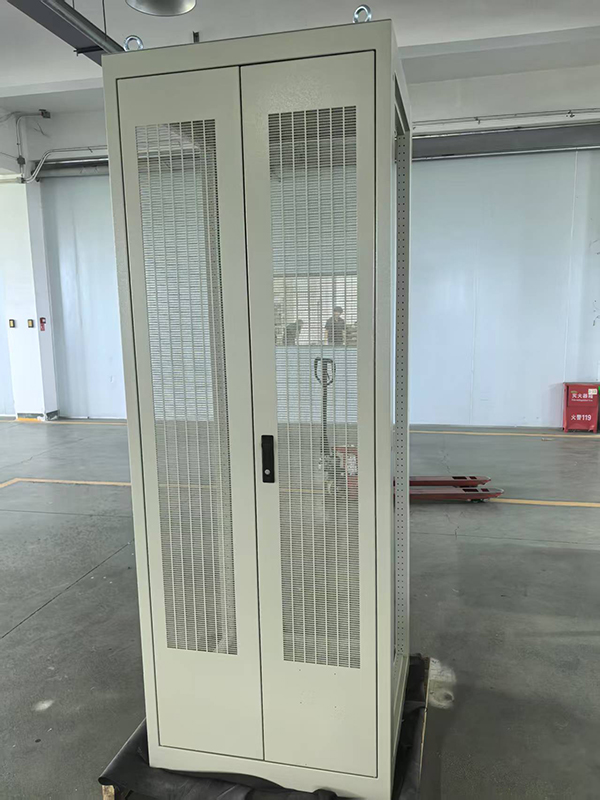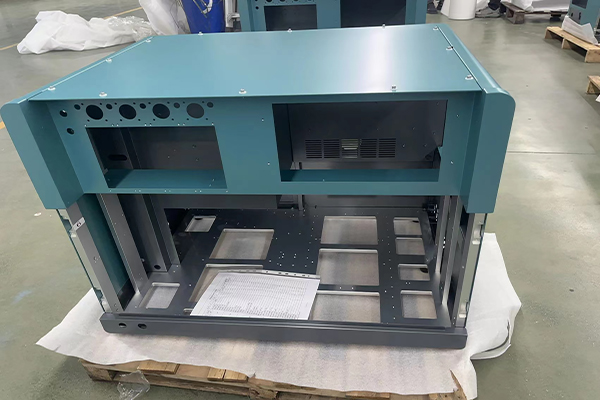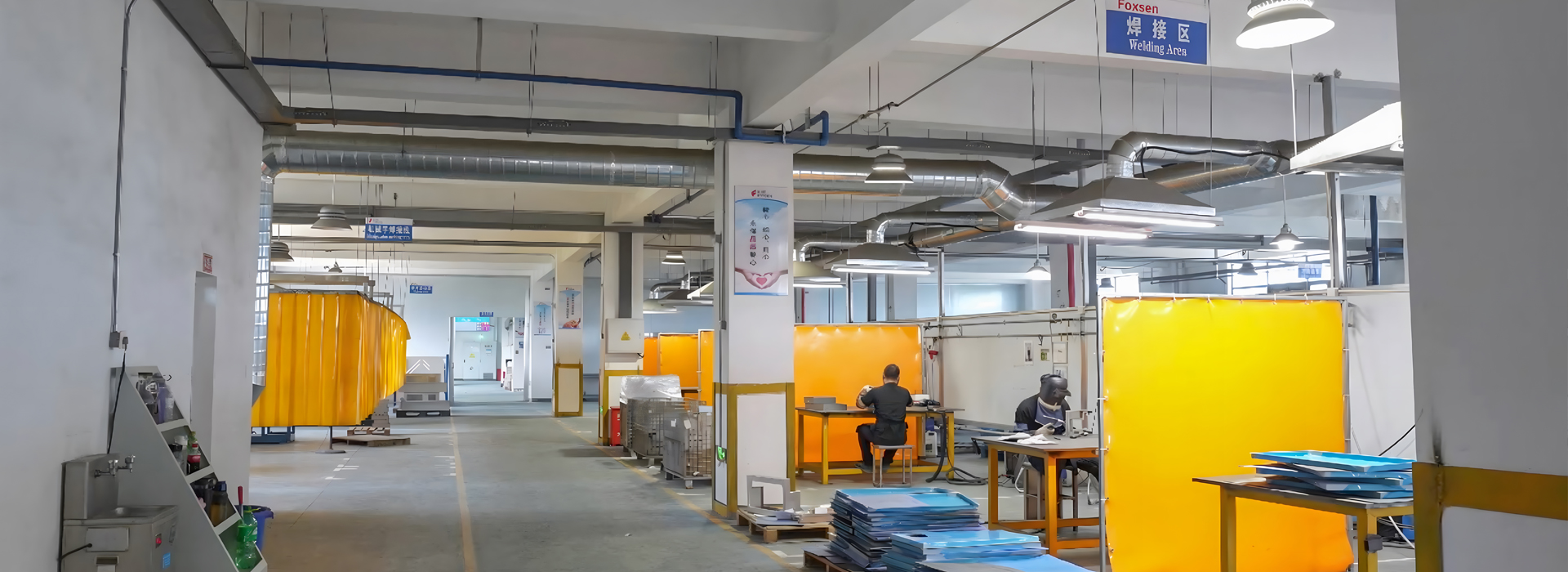In laboratories, equipment protection is essential. I have seen how FOXSEN Laboratory Medical Device Enclosures excel in this regard. These enclosures use Aluminium 6061 and 5052, which deliver unmatched durability. Their advanced surface treatments, such as anodisation, provide resistance to corrosion. I trust their precision engineering to safeguard sensitive devices from contamination and wear. FOXSEN also offers customisation options to meet unique laboratory needs. Every enclosure I’ve encountered reflects a commitment to quality and reliability, making them indispensable for laboratories.
Key Takeaways
FOXSEN enclosures are made from strong Aluminium 6061 and 5052.
These materials make them long-lasting and stop them from rusting.
Special coatings like anodising and powder coating add extra protection.
They guard against scratches and damage from the environment.
Accurate methods like laser cutting and CNC bending ensure a perfect fit.
Laboratories can customise enclosures to match their exact needs.
This helps improve work processes and keeps everyone safe.
FOXSEN enclosures follow ISO 13485:2016 rules for safety and quality.
Durability and Resistance

High-grade materials for long-lasting performance
When I think about durability, the materials used in construction come to mind first. FOXSEN's Laboratory Medical Device Enclosures stand out because they are crafted from Aluminium 6061 and 5052. These materials are known for their exceptional strength and resilience. I have seen how they perform under demanding conditions, resisting deformation and maintaining their structural integrity. This makes them ideal for laboratories where equipment often faces constant use and occasional mishandling.
Aluminium 6061 offers a perfect balance of strength and lightweight properties. It ensures that the enclosures are easy to handle without compromising durability. On the other hand, Aluminium 5052 excels in corrosion resistance, which is crucial in environments exposed to chemicals or moisture. Together, these materials create a robust housing solution that protects sensitive devices and extends their lifespan.
Surface treatments for corrosion and wear protection
The surface treatments applied to these enclosures add another layer of defence. I have observed how anodisation enhances the aluminium's natural resistance to corrosion. This process creates a protective oxide layer that shields the enclosure from chemical reactions and environmental damage.
Powder coating is another feature I appreciate. It not only improves the enclosure's appearance but also provides a tough, wear-resistant finish. This ensures that the enclosures remain functional and visually appealing even after years of use. These treatments make FOXSEN's Laboratory Medical Device Enclosures a reliable choice for safeguarding equipment in challenging laboratory settings.
Tip: Choosing enclosures with high-quality materials and advanced surface treatments can significantly reduce maintenance costs over time.
Precision Engineering for Laboratory Needs
Advanced manufacturing techniques like laser cutting and CNC bending
I have always been impressed by the precision that FOXSEN achieves in its Laboratory Medical Device Enclosures. The advanced manufacturing techniques they use, such as laser cutting and CNC bending, play a crucial role in this. Laser cutting ensures clean and accurate edges, which I find essential for creating enclosures that fit perfectly with laboratory devices. This technique eliminates rough finishes and guarantees a smooth surface, which is vital for maintaining the integrity of sensitive equipment.
CNC bending, on the other hand, allows for precise shaping of aluminium sheets. I have seen how this process ensures uniformity in every enclosure, regardless of its complexity. The ability to bend materials with such accuracy means that FOXSEN can create designs tailored to specific laboratory needs. These techniques not only enhance the functionality of the enclosures but also contribute to their aesthetic appeal.
Note: Precision in manufacturing is key to ensuring that enclosures meet the high standards required in laboratory environments.
Tight tolerances for optimal device performance
When it comes to laboratory equipment, even the smallest deviation can affect performance. FOXSEN understands this, which is why their enclosures are built with tight tolerances. I have observed tolerances as precise as ±0.005mm in their designs. This level of accuracy ensures that every component fits seamlessly, reducing the risk of operational issues.
Tight tolerances also minimise gaps and misalignments, which I find crucial for protecting devices from external contaminants. By maintaining such precision, FOXSEN ensures that their Laboratory Medical Device Enclosures provide a secure and reliable housing for sensitive instruments. This attention to detail reflects their commitment to quality and performance.
Waterproofing and Contamination Protection

Shielding devices from spills and high-humidity conditions
In laboratories, spills and high humidity are common challenges. I have seen how these conditions can damage sensitive equipment if not properly protected. FOXSEN's Laboratory Medical Device Enclosures provide an effective solution. Their design includes features that shield devices from moisture and accidental spills.
The enclosures use precision sealing techniques to create a watertight barrier. This prevents liquids from seeping into the housing and damaging internal components. I have noticed how this feature is particularly useful in environments where liquids like reagents or cleaning solutions are frequently used.
High humidity can also pose a risk by causing condensation inside equipment. FOXSEN addresses this with materials and designs that resist moisture accumulation. For instance, the aluminium used in their enclosures does not absorb water, ensuring the devices remain dry and functional.
Tip: Always choose enclosures with watertight seals to protect your equipment from unexpected spills and humidity-related issues.
Ensuring a sterile and contamination-free environment
Maintaining sterility is critical in laboratories. I have observed how FOXSEN's enclosures help achieve this by creating a controlled environment for devices. Their smooth surfaces and tight seals minimise the risk of contaminants entering the enclosure.
The surface treatments, such as anodisation, also play a role in maintaining cleanliness. These finishes resist bacterial growth and make cleaning easier. I find this especially important in laboratories handling medical samples or conducting research that requires a sterile environment.
Additionally, the precise construction of these enclosures eliminates gaps where dust or microbes could accumulate. This ensures that the equipment inside remains uncontaminated, even in busy lab settings. FOXSEN's Laboratory Medical Device Enclosures truly excel in providing a safe and sterile housing for sensitive instruments.
Note: Regular cleaning and maintenance of enclosures can further enhance their contamination protection capabilities.
Customisation and Versatility
Tailored designs for specific laboratory requirements
I have always appreciated how FOXSEN understands the unique needs of every laboratory. Their Laboratory Medical Device Enclosures are not one-size-fits-all solutions. Instead, they offer tailored designs that align perfectly with specific requirements. I have seen how this flexibility benefits laboratories handling diverse tasks, from medical research to diagnostic testing.
FOXSEN works closely with clients to create enclosures that meet their exact specifications. For instance, I once observed a laboratory that required enclosures with specialised compartments for storing delicate instruments. FOXSEN delivered a design that not only accommodated these instruments but also enhanced their accessibility. This level of customisation ensures that laboratories can optimise their workflows without compromising on equipment safety.
Tip: When choosing enclosures, always consider whether the design can be customised to suit your laboratory's unique processes.
Options for various sizes and applications
FOXSEN also excels in offering enclosures in a wide range of sizes. I have noticed how this versatility allows laboratories to house equipment of all shapes and dimensions. Whether it’s a compact enclosure for portable devices or a larger one for complex machinery, FOXSEN provides a solution that fits.
Their enclosures cater to various applications, including housing surgical tools, imaging devices, and even sensitive analytical instruments. I once visited a laboratory that used FOXSEN enclosures for both small centrifuges and large spectrometers. The ability to choose from multiple sizes and configurations made it easier for the lab to organise its equipment efficiently.
This adaptability ensures that FOXSEN enclosures remain a practical choice for laboratories with diverse needs. By offering such a wide array of options, they empower laboratories to protect their equipment while maintaining operational efficiency.
Compliance and Safety Standards
Adherence to ISO 13485:2016 standards
I have always valued the importance of compliance when it comes to laboratory equipment. FOXSEN enclosures adhere to ISO 13485:2016 standards, which I consider a hallmark of quality in the medical device industry. This certification ensures that every enclosure meets stringent requirements for safety, reliability, and performance.
ISO 13485:2016 focuses on maintaining a robust quality management system. I have seen how FOXSEN integrates these principles into their manufacturing processes. For instance, they follow strict protocols to ensure consistency in design and production. This guarantees that each enclosure performs as expected, regardless of its application.
Note: ISO 13485:2016 compliance is essential for laboratories that need equipment certified for medical use.
By choosing FOXSEN enclosures, I know laboratories can confidently meet regulatory requirements. This compliance not only safeguards sensitive devices but also supports the credibility of the laboratory itself.
Rigorous quality inspections for guaranteed reliability
Reliability is non-negotiable in laboratory environments. I have observed how FOXSEN ensures this through rigorous quality inspections. Each enclosure undergoes multiple checks at different stages of production. These inspections verify that the enclosures meet both design specifications and performance standards.
FOXSEN’s quality control process includes:
Material testing: Ensuring the aluminium used is free from defects.
Dimensional checks: Verifying tight tolerances for precise fits.
Functional testing: Confirming that seals and finishes perform as intended.
I find this attention to detail reassuring. It means that every enclosure leaving their facility is ready to handle the demands of a laboratory setting.
Tip: Always prioritise enclosures that undergo thorough quality inspections. This reduces the risk of equipment failure and ensures long-term reliability.
FOXSEN’s commitment to quality gives me confidence in their products. Their enclosures provide a dependable solution for protecting laboratory equipment, enabling researchers to focus on their work without concerns about safety or performance.
FOXSEN Laboratory Medical Device Enclosures offer unmatched durability, precision, and adaptability. I have seen how their advanced features protect sensitive equipment in demanding environments. Their compliance with industry standards ensures reliability and safety. These enclosures provide laboratories with a dependable solution for safeguarding devices. By choosing FOXSEN, I believe laboratories can enhance efficiency and focus on advancing scientific research. Their commitment to quality makes them an indispensable asset for any laboratory setting.
FAQ
What makes Aluminium 6061 and 5052 ideal for laboratory enclosures?
I find Aluminium 6061 and 5052 perfect for laboratory enclosures due to their strength and corrosion resistance. Aluminium 6061 offers durability and lightweight handling, while Aluminium 5052 excels in resisting chemical exposure. Together, they ensure long-lasting protection for sensitive devices.
Can FOXSEN enclosures be customised for unique laboratory needs?
Yes, FOXSEN enclosures can be tailored to meet specific requirements. I’ve seen laboratories request specialised compartments, unique dimensions, or additional features. FOXSEN collaborates closely with clients to design solutions that optimise workflows and enhance equipment safety.
How do FOXSEN enclosures ensure sterility in laboratory environments?
FOXSEN enclosures maintain sterility through smooth surfaces, tight seals, and advanced surface treatments like anodisation. These features resist bacterial growth and make cleaning easier. I’ve observed how this design minimises contamination risks, even in high-demand laboratory settings.
Are FOXSEN enclosures suitable for high-humidity conditions?
Absolutely. FOXSEN enclosures use precision sealing techniques to create watertight barriers. I’ve noticed how this prevents moisture from damaging internal components. Their aluminium construction also resists water absorption, ensuring devices remain dry and functional in humid environments.
Do FOXSEN enclosures comply with industry standards?
Yes, FOXSEN enclosures adhere to ISO 13485:2016 standards. This certification guarantees safety, reliability, and performance. I trust their rigorous quality inspections, which ensure every enclosure meets the stringent requirements of the medical device industry.





